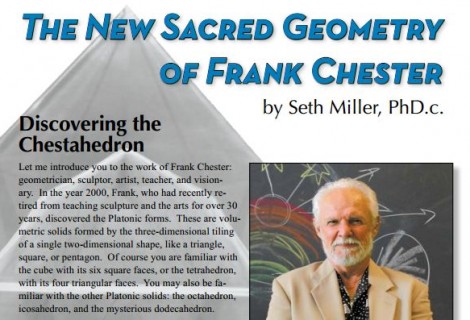An Esoteric Guide to Spencer Brown’s Laws of Form #1
« Previous Page | 1 2 3 4 | View All | Next Page »
(A full PDF of this article can be had here.)
George Spencer Brown (in his spirit, I would like to say: “Let George Spencer Brown = GSB”), a logician, engineer, and teacher, wrote a curious little book called Laws of Form, that inspired countless interesting people of widely varying backgrounds. The book is not a book of mathematics, nor is it a book of logic, although if you were to read it this is likely what you’d say. It is, rather, an attempt to enact something prior to both. Indeed, GSB feels that his work actually forms (meaning both “is” and “shapes”) “the basic forms [same double-meaning] underlying linguistic, mathematical, physical, and biological science” (p. v of the 1972 edition).
If you haven’t read Laws of Form (LoF), I quite recommend it, and it is actually quite short. Even if you don’t want to follow along with the meaty theorems and proofs, the prose and context is definitely worth chewing on. What is fascinating to me is that the work can also be read with an esoteric eye, which is to say, with a sensitivity to the form and nature of spiritual experiences. This is not at all a departure from what GSB intended: in his other works he quite openly discusses this connection (see Only Two Can Play This Game published under his pen name, James Keys). Even in LoF he prefaces the preface with this quote from Blake:
“Tho’ obscur’d, this is the form of the Angelic land.”
So what I would like to do is to show that within the LoF are a number of coherent relations to principles that are rightly considered esoteric: they are hidden, but very important when considering actual spiritual development. Of course as a whole LoF can be taken as a cosmological treatise, and in this sense could be read alongside works such as those by Ibn Arabi, Nagarjuna, Lao Tzu, or Eckhart, among many others.
Because I doubt most of the people reading this (hi people!) already have a copy of LoF (I don’t know why you are waiting), I’m going to keep things pretty informal: I’m going to cite passages from LoF and then write comments on esoteric connections, including some connections to second-order cybernetics and cybernetic epistemology. The esoteric connections I will be pointing out rely heavily upon my own experience, which is primarily informed by the spiritual science of Rudolf Steiner’s anthroposophy. The reason I am writing about this here is that in my PhD dissertation work I am connecting anthroposophy to second-order cybernetics and related disciplines, and LoF played an influential, although not central, role in the unfolding of second-order cybernetics.
Excellent. Hopefully the context provided up to this point is sufficient for me to begin, but before I do, I want to warn you that this journey is not for the faint of heart or the unstable in mind, and will be neither easy nor brief (there are six installments in this series), but it WILL be worth it. Let us dive in:
LoF p. v (all page numbers are from the 1972 version by The Julian Press, Inc.)
- Although all forms, and thus all universes, are possible, and any particular form is mutable, it becomes evident that the laws relating such forms are the same in any universe. It is this sameness, the idea that we can find a reality which is independent of how the universe actually appears, that lends such fascination to the study of mathematics. That mathematics, in common with other art forms, can lead us beyond ordinary existence, and can show us something of the structure in which all creation hangs together, is no new idea.
This corresponds with Steiner’s view that mathetmatics is a spiritual activity, par excellance. However, it must be recognized that it is not the CONTENT of mathematics alone which is what makes it spiritual, it is the PROCESS of mathematics.
LoF p. v
- A mathematical text is thus not an end in itself, but a key to a world beyond the compass of ordinary description.
This “world beyond the compass of ordinary description” can be taken to refer to the spiritual world. As we learn elsewhere from GSB (I suggest reading the transcript of his presentation at Esalen in 1973’s American University of Masters Conference: http://www.lawsofform.org/aum/index.html), the world he is trying to describe is not formally describable. This is a problem, obviously, and it is the same problem that pretty much every mystic of every tradition has run into in one form or another. Of course I could cite the Tao Te Ching’s “the way that can be spoken of is not the constant way; the name that can be named is not the constant name”, or reference the whole point of the koan in Zen, or the Sufi’s Wujud (the incomparable, incommensurable nature of God, which Ibn ‘Arabi points out is “absolutely incomparable with every declaration of incomparability that delimits”). Basically, say anything and you are already off the mark, as it were.
But here’s the important esoteric bit, expressed well in this quote from author John Barth’s novel Chimera:
“The key to the treasure is the treasure.”
« Previous Page | 1 2 3 4 | View All | Next Page »






Thanks for posting this!